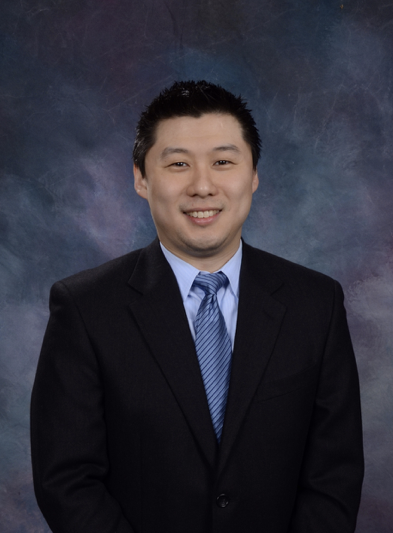ADVERTISEMENT
The Challenges of Bringing Biosimilars to Market
An interview with Edward Li, PharmD, MPH
 Edward Li, Pharm D, MPH, BCOP, a professor in the Department of Pharmacy Practice at the University of New England College of Pharmacy, is a respected expert on the emerging role biosimilars will play in patient care. He’s published reports on how pharmacists must take the lead in promoting the use of the new agents among patients and providers. He’s also advocating regulatory authorities for the widespread use of biosimilars and is pushing for increased production of the agents, so more patients have access to the cost-effective therapies.
Edward Li, Pharm D, MPH, BCOP, a professor in the Department of Pharmacy Practice at the University of New England College of Pharmacy, is a respected expert on the emerging role biosimilars will play in patient care. He’s published reports on how pharmacists must take the lead in promoting the use of the new agents among patients and providers. He’s also advocating regulatory authorities for the widespread use of biosimilars and is pushing for increased production of the agents, so more patients have access to the cost-effective therapies.
Dr. Li recently discussed the many challenges of bringing biosimilars to market and what pharmacists can do to help move the process along.
Can you provide a brief update on the current biosimilar market and how you see it progressing in the next 5 years?
There’s been a lot of activity in the inflammatory disease space. New biosimilars for the active treatment of cancer will also be coming online, although their launch will probably be delayed for several years due to patent-related issues and litigations. Laws need to be clarified in terms of what the “patent dance” truly involves.
The Supreme Court just ruled on one of those issues when it decided biosimilar manufacturers don’t have to wait 180 days after receiving approval from the U.S. Food and Drug Administration (FDA) before launching their products. That’s a good thing, but there are other similar types of clarifications that need to be sorted out in the courts.
What are the main barriers to more widespread use of biosimilars and how can they be overcome?
There are concerns among providers about the definition of biosimilars, which have to be “highly similar” to reference products with no clinically meaningful differences. Providers have issues with the term “highly similar,” because they’re used to working with generics, which are identical to reference products. The regulatory designation of being highly similar is what a reference manufacturer must show among lots of its own products, and biosimilars are expected to meet the same standard. Highly similar is not a bad thing—it’s actually an industry standard.
The makers of reference products also lock in massive contracts of exclusivity with major payers right before biosimilars are launched. That essentially blocks the biosimilar out of the market. Payers don’t have a philosophy of allowing providers and patients to choose which product they want to use. Moving forward, will payers incentivize the use of biosimilars? If industry is realizing savings from biosimilar competition, then patients absolutely need to realize some lowering of their out-of-pocket expenses. It’s dependent on the payers to make that happen. No one else is going to do it.
Are misconceptions about biosimilars impacting acceptance of the products along the front lines of care?
Misinformation exists about the FDA approval process, which determines interchangeability of biosimilars to approved biologic reference products. The exercise does not assess the efficacy and safety of biosimilars, and that feeds the general concern that biosimilars are not as effective or safe as reference products. In reality, that’s not the case. Patients and providers must realize that the FDA approval of biosimilars is as rigorous as it is for reference products. If more providers understood that, they’d feel a lot more comfortable using biosimilars.
Article continues on page 2
What is the current standard of interchangeability and how does it impact clinical practice?
Interchangeability is a regulatory designation. The Biologics Price Competition and Innovation Act of 2009 established that studies designed to prove interchangeability must show that the risk between alternating between several interchangeable biosimilars and the reference product is no greater than if the reference product was given alone. That sounds reasonable at face value, but that’s not how biologics will be used in real-world care settings. That’s also a daunting, resource-heavy task for biosimilar manufacturers to accomplish.
I’m not sure manufacturers will be willing to go through that process for the one year of exclusivity they’d get for having a biosimilar designated as interchangeable. The payoff from a business perspective may not be worth it in terms of how much money drug companies are willing to invest. But just because a biosimilar isn’t designated as interchangeable doesn’t mean it’s an inferior product. That’s simply not the case.
What's the best way to educate physicians about the efficacy and safety of biosimilars?
Anecdotally, pharmacists who have good relationships with prescribers can work closely with them and have candid, unbiased discussions about biosimilars. Physicians tend to trust pharmacists, and will generally be accepting of the products they recommend. Issues arise with acceptance of biosimilars when physicians don’t interact with pharmacists and haven’t had opportunities to discuss the clinical benefits the products provide. That’s why pharmacists must fulfill their roles as medications experts. They need to know everything about biosimilars and be able to translate that information to all providers so they’re onboard with using the products.
—Dan Cook
For more articles like this, visit the Biosimilars Resource Center





















